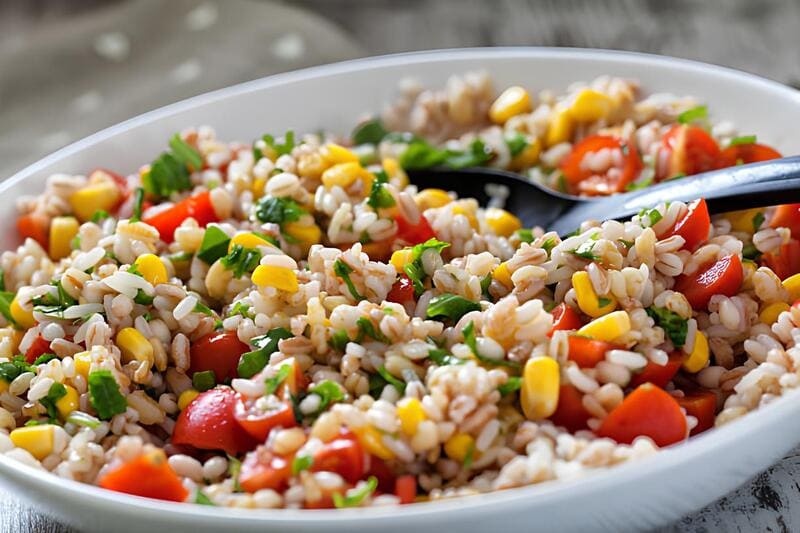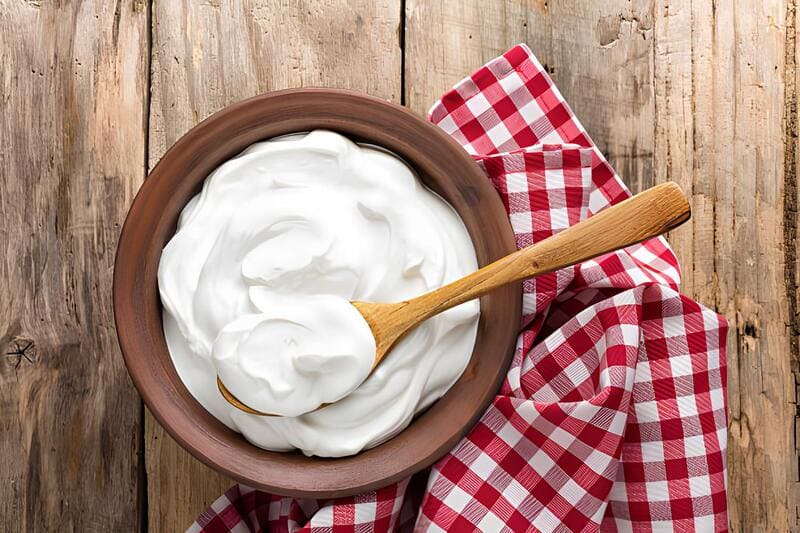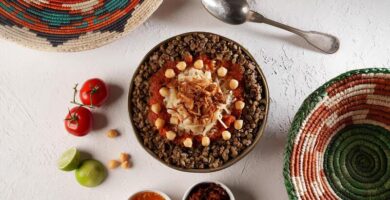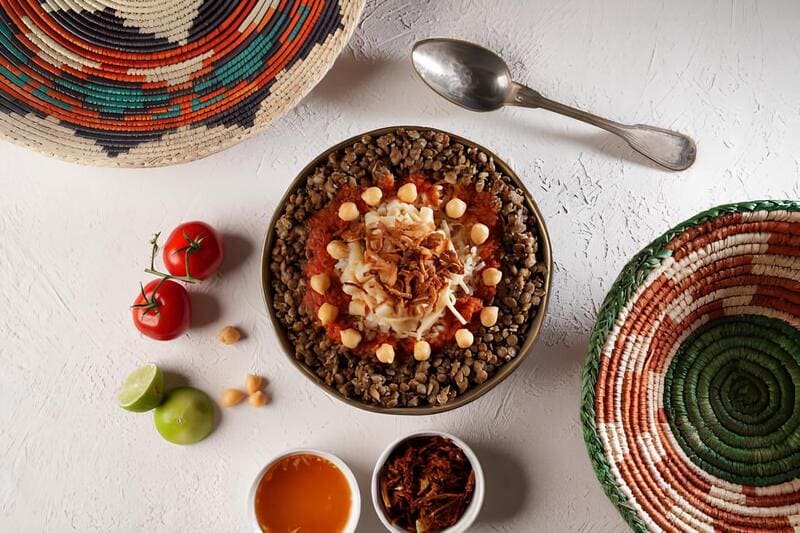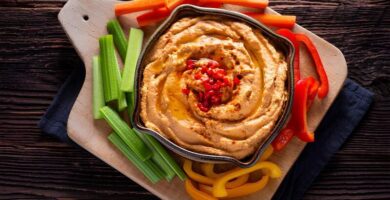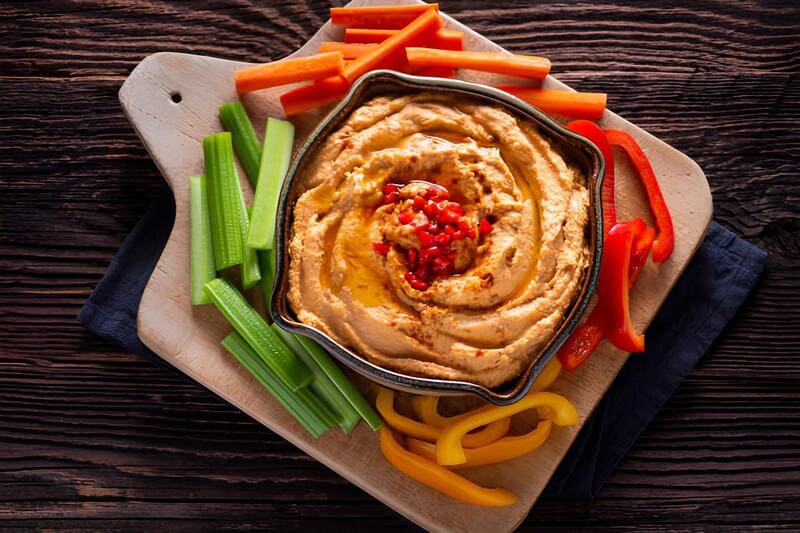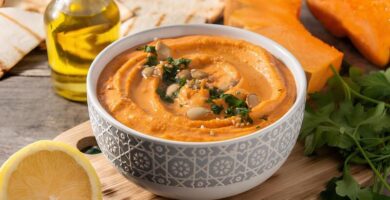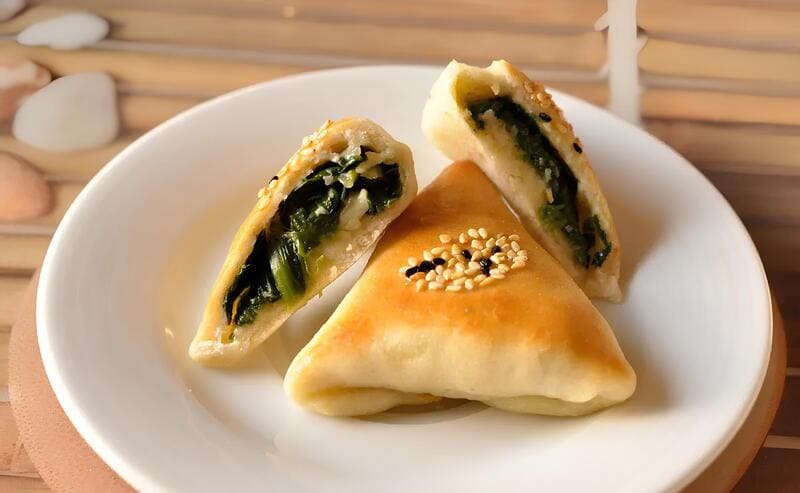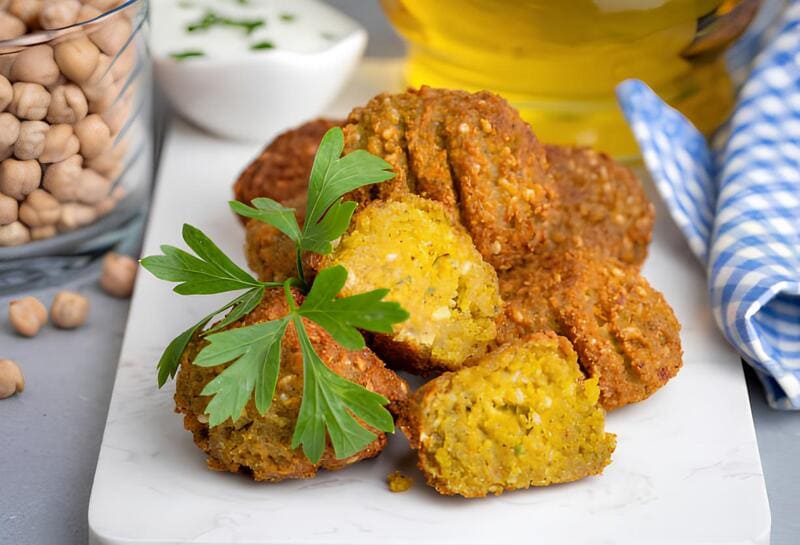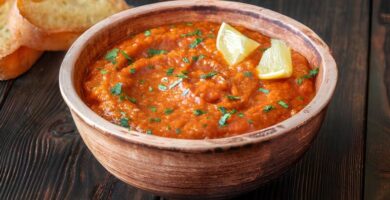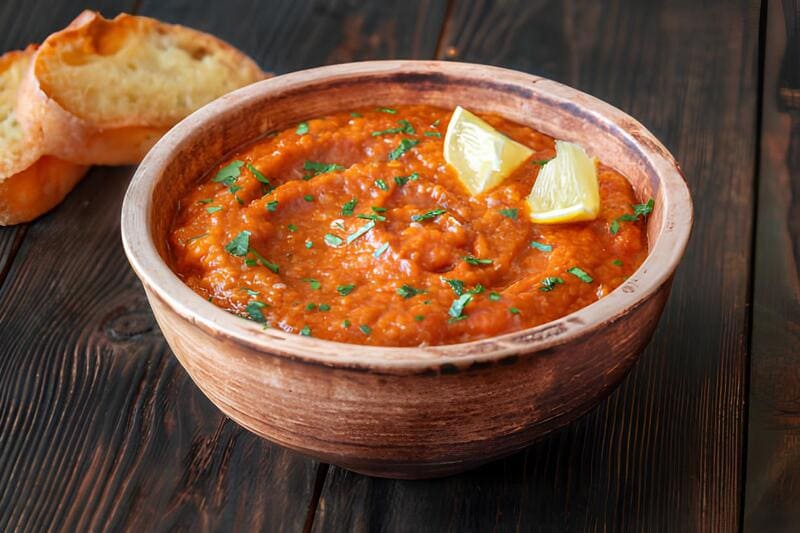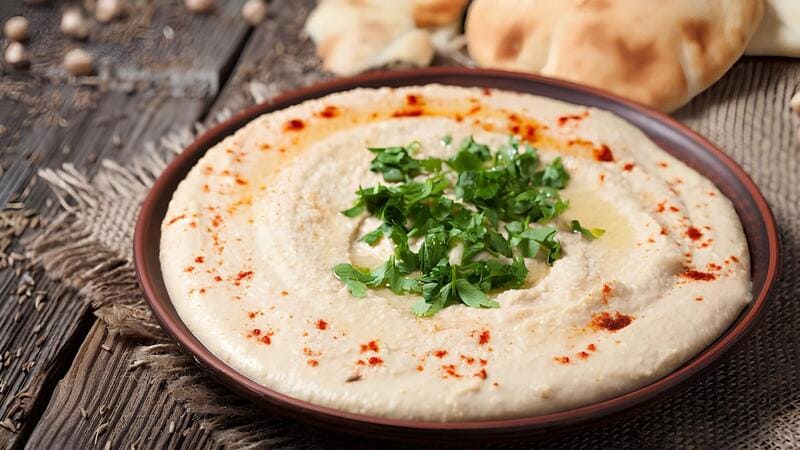
Here’s the modified text with the given keywords included:Tahini Salad is a well-loved Egyptian side dish made from sesame paste. This vegan and versatile dish often accompanies mains or is enjoyed simply as a dip with bread or vegetables. Its creamy and rich flavor, combined with spices and a hint of tang, makes it a unique addition to any meal.
Traditionally served during family gatherings and celebrations, this simple yet nutritious recipe has been passed down through generations. It’s particularly popular during festive seasons like Eid, bringing a touch of tradition and delightful flavor to the table. Here’s how you can make this classic Egyptian dish.
Ingredients
- 500g raw tahini (sesame paste)
- 750ml water
- 20g salt
- 15g red chili pepper, ground
- 10g cumin, ground
- 60ml white vinegar
Preparation
- In a large mixing bowl, combine the tahini with water gradually while stirring continuously to avoid any lumps.
- Add the salt, ground red chili pepper, and ground cumin to the mixture and stir until well combined.
- Pour in the white vinegar slowly, continuing to stir in the same direction to maintain a smooth consistency.
- Adjust the texture of the tahini by adding more warm water if needed, ensuring it reaches a smooth and creamy consistency.
- Transfer to a serving dish, garnish with a drizzle of olive oil or a sprinkle of paprika, if desired.
Did you know?
Tahini Salad, made from tahini, has ancient origins dating back over 4,000 years to ancient Persia, now modern-day Iran. Tahini made its way through the Mediterranean and into Egyptian cuisine, where it became a staple due to its rich flavor and nutritional value.
This dish is not only beloved for its taste but also for its incredible health benefits. Sesame seeds, from which tahini is made, are rich in healthy fats, vitamins, and minerals. They are a particularly excellent source of calcium, iron, and magnesium, making this dressing not only delicious but highly nutritious.
One interesting fact about homemade tahini is its variability based on the quality of sesame seeds used. Top-notch tahini, often recognized by its smooth texture and rich, nutty flavor, is predominantly sourced from well-known producers like Bawadi. This ensures a premium quality that adds depth to any dish.
Tahini’s versatility and vegan-friendly nature make it a perfect addition to a wide variety of preparations, whether as a dressing, a base for sauces, or simply as a flavorful dip. Embrace this Egyptian culinary gem, and elevate your meal with its unique and sumptuous flavor.


